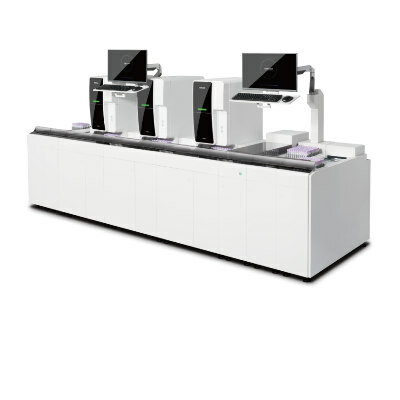Microvessels Engineered as 3D Test Bed for Human Diseases
By LabMedica International staff writers
Posted on 05 Jun 2012
Bioengineers have developed the first structure to grow small human blood vessels, generating a three-dimensional (3D) test bed that provides a better way to assess disease, test drugs, and possibly in the future grow human tissues for transplant. Posted on 05 Jun 2012
The findings were published May 25, 2012, in the journal Proceedings of the National Academy of Sciences of the USA (PNAS). “In clinical research you just draw a blood sample,” said first author Dr. Ying Zheng, a University of Washington (UW) research assistant professor of bioengineering. “But with this, we can really dissect what happens at the interface between the blood and the tissue. We can start to look at how these diseases start to progress and develop efficient therapies.”
Dr. Zheng first designed the structure out of the body’s most plentiful protein, collagen, while working as a postdoctoral researcher at Cornell University (Ithaca, NY, USA). She created tiny channels and injected this honeycomb with human endothelial cells, which line human blood vessels.
During a period of two weeks, the endothelial cells grew throughout the structure and formed tubes through the mold’s rectangular channels, just as they do in the human body. When brain cells were injected into the surrounding gel, the cells released chemicals that triggered the engineered vessels to sprout new branches, extending the network. A similar system could supply blood to engineered tissue before transplant into the body.
After joining the UW last year, Dr. Zheng collaborated with the Puget Sound Blood Center to see how this research platform would work to transport real blood. The engineered vessels could transport human blood smoothly, even around corners, and when treated with an inflammatory compound the vessels developed clots, similar to what real vessels do when they become inflamed.
The system also shows potential as a model for tumor progression. Cancer originates as a hard tumor but secretes chemicals that cause neighboring vessels to bulge and then sprout. Ultimately tumor cells use these blood vessels to penetrate the bloodstream and colonize new areas of the body. When the researchers added to their system a signaling protein for vessel growth that is overabundant in cancer and other disorders, new blood vessels grew from the originals. These new vessels were leaky, just as they are in human tumors.
“With this system we can dissect out each component or we can put them together to look at a complex problem. That’s a nice thing--we can isolate the biophysical, biochemical or cellular components. How do endothelial cells respond to blood flow or to different chemicals, how do the endothelial cells interact with their surroundings, and how do these interactions affect the vessels’ barrier function? We have a lot of degrees of freedom,” stated Dr. Zheng.
The system could also be utilized to study malaria, which becomes lethal when diseased blood cells adhere to the vessel walls and block small openings, cutting off blood supply to the brain, placenta, or other vital organs. “I think this is a tremendous system for studying how blood clots form on vessels walls, how the vessel responds to shear stress and other mechanical and chemical factors, and for studying the many diseases that affect small blood vessels,” said coauthor Dr. José López, a professor of biochemistry and hematology at UW Medicine and chief scientific officer at the Puget Sound Blood Center (Seattle, WA, USA).
Further research will utilize the system to study blood vessel interactions that involve inflammation and clotting.
Related Links:
University of Washington













